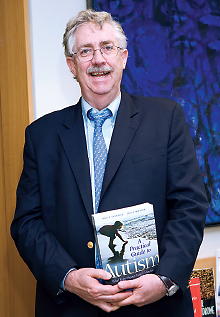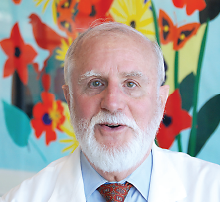AACAP Updates Guidelines On Autism Spectrum Disorder
Abstract
New practice parameter for autism spectrum disorder will help clinicians coordinate treatment.
A flood of new research in recent years has prompted the American Academy of Child and Adolescent Psychiatry to revise a key guideline for evaluating and treating autism.
The “Practice Parameter for the Assessment and Treatment of Children and Adolescents With Autism Spectrum Disorder” applies that information to make the case for “multidisciplinary care, coordination of services, and advocacy for individuals and their families.”
The practice parameter appeared in the February issue of the Journal of the American Academy of Child and Adolescent Psychiatry.

New research creates a need for revised autism guidelines, said Yale’s Fred Volkmar, M.D.
“There were about 2,800 papers published last year alone,” said lead author Fred Volkmar, M.D., a professor of psychiatry, pediatrics, and psychology at the Yale School of Medicine and director of the Yale Child Study Center. “The field is changing rapidly.”
Practice parameters seek to promote effective care and move professional medical methods closer to current best practices.
In all, Volkmar’s work group reviewed abstracts of 9,581 articles and selected 186 for full examination based on quality and generalizability.
“This is a very comprehensive effort, based on the current evidence,” commented James Harris, M.D., a professor and director of the Developmental Neuropsychiatry Clinic in the Division of Child and Adolescent Psychiatry at Johns Hopkins. Harris was not involved in the preparation of the practice parameter.
After summarizing material on the epidemiology, etiology, and clinical course of autism spectrum disorder, the document recommends routine inquiry about symptoms of autism spectrum disorder as part of the developmental assessment of young children and of the psychiatric assessment of all children. If a child has significant symptoms, clinicians should coordinate a full medical, psychological, and communication evaluation. A careful evaluation should differentiate between autism and a variety of developmental and other disorders, as well as intellectual and behavioral disabilities.
“Finding children with autism spectrum disorder early and getting them into treatment helps them do better and develop workaround tools,” said Volkmar.
Treatment involves a team approach, he said. Strong evidence now supports structured educational, communication, and behavioral treatments backed by family involvement. There is lesser evidence for the value of pharmacological treatments, but they can help with comorbid conditions like anxiety, depression, aggression, inattention, and other problems.

James Harris, M.D., a professor of child and adolescent psychiatry at Johns Hopkins, says that psychiatrists need to ask parents if they are using any alternative/complementary therapies with their children.
“The role of psychiatrists is first to closely coordinate diagnosis and treatment with teachers, behavioral psychologists, and speech and language pathologists, as well as looking for co-occurring conditions like anxiety or mood dysregulation,” said Harris. “Once a treatment team is in place, the psychiatrist can evaluate whether medications can help the child make productive use of those interventions.”
The practice parameter concludes with a strong recommendation that clinicians should “inquire about the use of alternative/complementary treatments and be prepared to discuss their risk, and potential benefits.”
“Perhaps 90 percent of parents of children with autism use some kind of alternative or complementary therapies,” said Volkmar. “Most of them are harmless, but some, like chelation or secretin, are not, so we have to encourage a discussion with parents about the lack of evidence.”
Harris agreed. “The psychiatrist has to ask what the parents are actually doing, then stick with them and educate them.” ■
“Practice Parameter for the Assessment and Treatment of Children and Adolescents With Autism Spectrum Disorder” can be accessed here.



